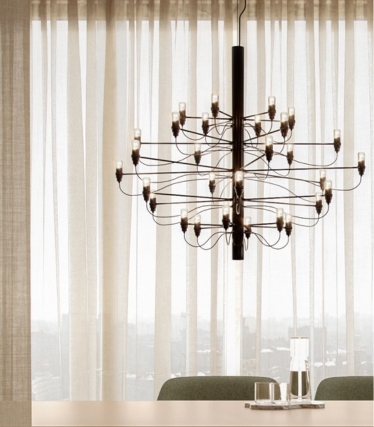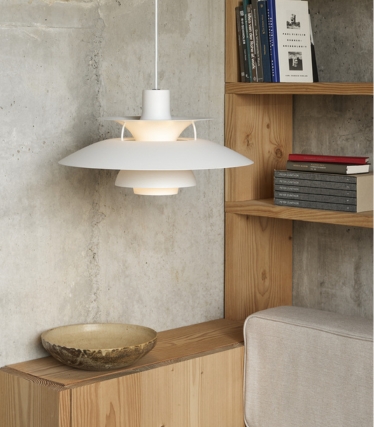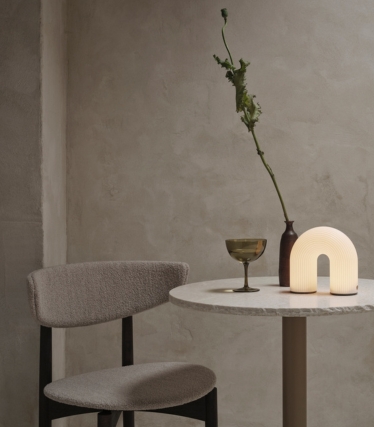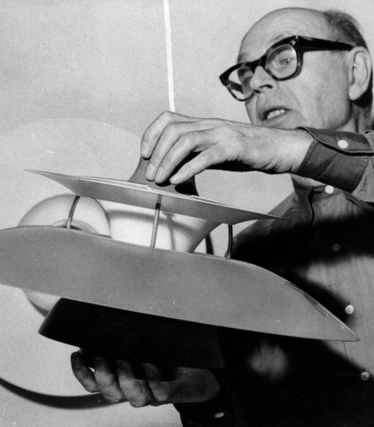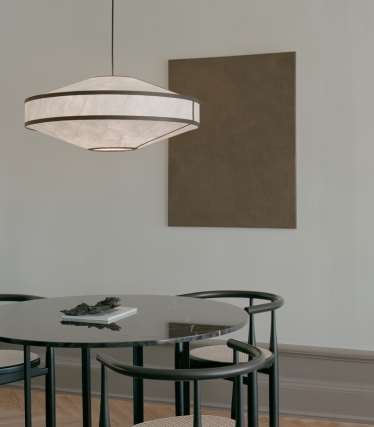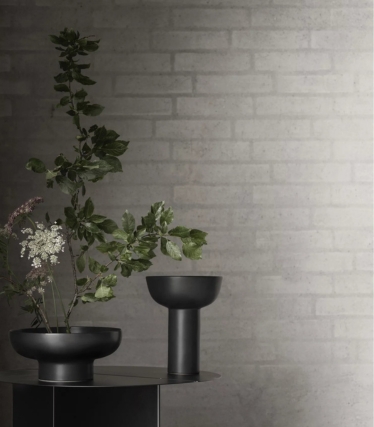Multi-Lite - A beautiful and functional lamp by Louis Weisdorf
Danish architect and technical designer Louis Weisdorf is behind a number of iconic design classics in lighting. One of the most popular lamps, the Multi-Lite pendant, he designed in 1972, where it was produced by Lyfa in two different color combinations; white with a chrome ring or a brass version with white interior. Since 2016, the lamp has been produced by the Danish lighting company Gubi, in close collaboration with Louis Weisdorf. In addition to the original color combination, the lamp is now available in several different colors.
A lamp with varying looks
According to Louis Weisdorf, lamps are mostly static in their form and expression - once they are designed, put into production and installed in the home, they are what they are! With a desire to create a lamp that could do more than that, he set about designing a lamp where the user could put their own stamp on the design. The goal was to be able to easily change the lamp when you wanted or needed variation: "That's when I came up with Multi-Lite, with shades that can be rotated to different positions, changing the appearance of the lamp significantly and throwing the light in new directions. And my theory about the buyers' need to be able to influence the look of their lamp themselves seems to hold true".
The characteristic lampshade consists of several different elements; two cylindrical shades in the middle that hide the light source in the center and allow an upward and downward light. The two outer shades are each shaped like a quarter of a sphere and can be rotated around the central axis of the lamp. They can then be positioned to form a hemisphere that allows light to escape either from below or above. The two shades adjust independently of each other and therefore allow you to set them in an asymmetrical position that not only gives the lamp an exciting and eye-catching look, but at the same time creates an exciting asymmetrical light.
See the whole series here, which today consists of the pendant in two different sizes, as well as table lamp and floor lamp.
)
)
Louis Weisdorf's interest in form and design
Very early on, Louis Weisdorf realized that he had a sense of space and was able to visualize it. Two very important prerequisites for working with form and design. He also had an innate need to change the appearance and improve the function of things around him, so becoming a designer was an obvious choice. He was therefore educated at the Royal Danish Academy of Fine Arts School of Architecture, where the program at the time still included Industrial Design.
"It was a bit of a coincidence that I started working with lighting design. I ended up working for PH (Poul Henningsen), and later Verner Panton. In particular, PH's principles for shielding the light source so that it does not dazzle, I took to heart". He says in an interview, adding that he didn't get the opportunity to design lamps until he worked as an architect at Tivoli Gardens.
His first independently designed lamp was the Konkylie pendant from 1964. Inspired by PH's lighting principles, Verner Panton's fantasy world and Tivoli's colorful, creative environment. But what made it particularly special was that it was constructed from 12 uniform slats. A special Tivoli version, which was gold anodized on the outside and painted alternating orange and red on the inside, was hung throughout the garden. A few Konkylie pendants are still hanging at the Chinese Tower.
The idea of lamps made up of uniform elements is one of the hallmarks of Louis Weisdorf's lighting design. The same principle can be seen, for example, in the well-known spherical Turbo pendant, as well as the Facet lamp and the beautiful conch pendant. "One of the things that fascinated me was the very simple construction principle, but also that you could vary the appearance of the lamps by mixing different colored slats. But as time went on, I missed more options for variation, until I came up with a completely new idea. Where the inspiration came from, I have no idea".
**Close collaboration with GUBI
Louis Weisdorf got to know the Gubi family when they lived in the same neighborhood in Frederiksberg and had children attending the same school. However, it took many years before GUBI recognized his Turbo pendant and offered to put it into production. This was the start of a successful collaboration on Multi-Lite, which was later complemented by the floor lamp and table lamp in many color combinations.
Gubi is a Danish design company that produces both furniture and lamps. They place great emphasis on aesthetics, functionality and creativity, and Louis Weisdorf's Multi-Lite lamp is a perfect fit.
)
